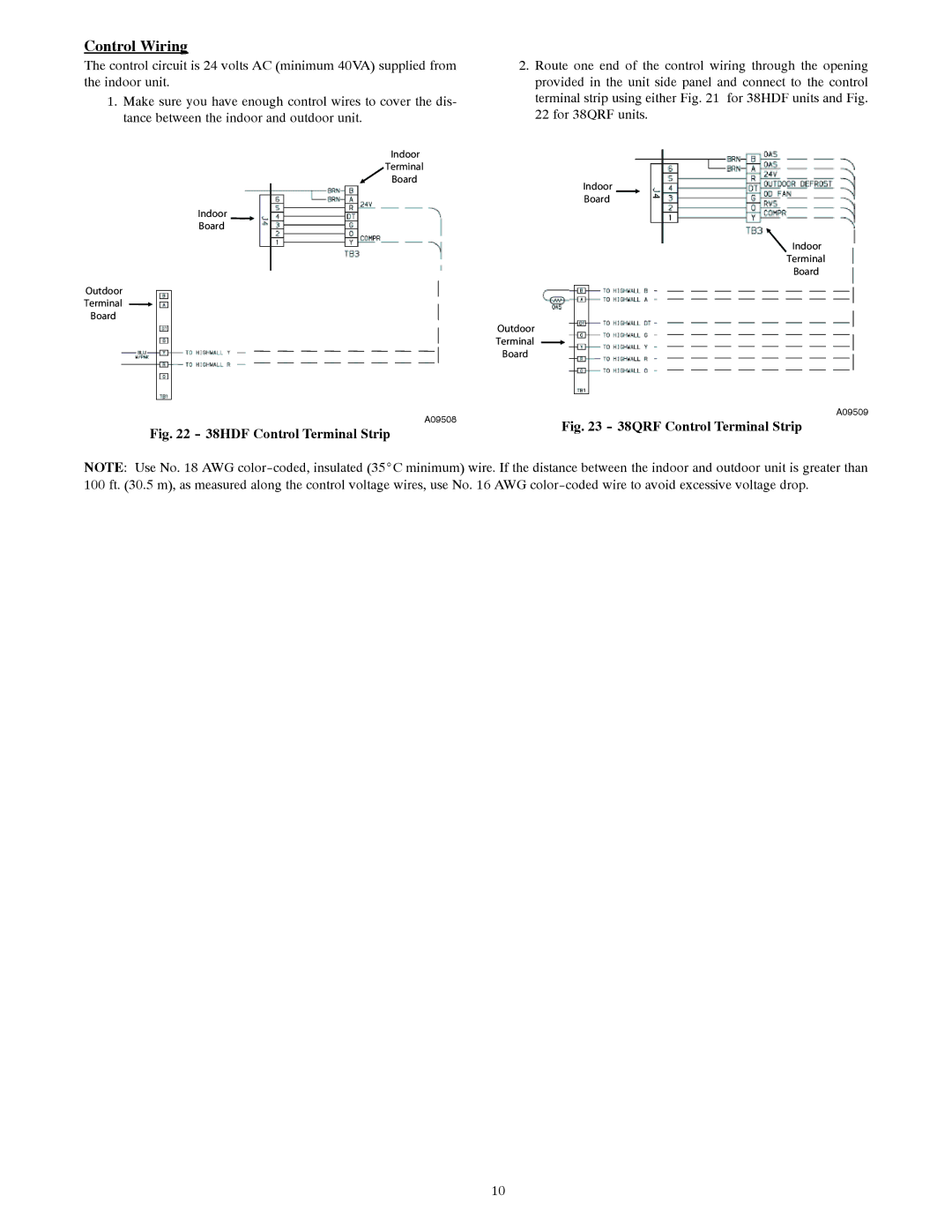40QNQ, 40QNC specifications
The Carrier 40QNC and 40QNQ are advanced rooftop packaged units designed for efficient heating and cooling in commercial applications. These units are particularly known for their reliability, versatility, and energy-efficient performance, making them a preferred choice for building owners and HVAC professionals alike.One of the standout features of the Carrier 40QNC and 40QNQ units is their variable-speed technology. This innovative system allows for precise control of airflow and temperature, ensuring that indoor environments maintain consistent comfort levels while minimizing energy consumption. The variable-speed compressor operates at different speeds based on the cooling demand, leading to reduced energy costs and improved overall efficiency.
In terms of energy performance, both models boast high Seasonal Energy Efficiency Ratios (SEER) and Heating Seasonal Performance Factors (HSPF). This not only contributes to lower energy bills but also helps in meeting energy efficiency standards and regulations in various regions. This makes the 40QNC and 40QNQ ideal for environmentally conscious building projects aiming for sustainability.
Another notable feature is the advanced microchannel coil technology utilized in these units. Microchannel coils are lighter, more compact, and provide enhanced heat exchange capabilities compared to traditional coils. This technology contributes to a more efficient refrigerant flow and ultimately leads to improved performance and durability of the unit.
Moreover, both models come equipped with a robust control system that enhances user interface. With smart thermostat compatibility, users can easily manage their building's climate remotely, ensuring optimal comfort and energy management. These systems are designed to integrate seamlessly with building management systems (BMS), allowing for greater control and optimization.
The construction of the Carrier 40QNC and 40QNQ also deserves mention. The units are built with durable materials designed to withstand harsh weather conditions, providing longevity and reliability. Additionally, the low sound levels produced by these units make them suitable for noise-sensitive settings, ensuring comfort without disruptive operation.
In summary, the Carrier 40QNC and 40QNQ are exemplary rooftop packaged units that combine advanced technology, energy efficiency, and reliable performance. Their variable-speed operation, microchannel coil technology, and robust control systems make them ideal solutions for commercial heating and cooling needs, catering to both comfort and sustainability.

